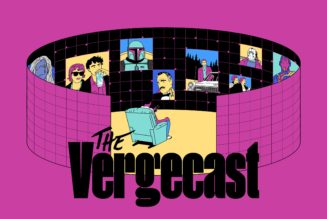
There haven’t been many musicians like Selena Quintanilla: she was a Tejano superstar who managed to find major label mainstream success as one of the music industry’s first Latin artists to top the charts. Her dazzling career was cut tragically short when she was murdered by a fan in the spring of 1995, just before her 24th birthday. A 1997 film, Selena, which starred Jennifer Lopez in the titular role, solidified her legend — anointing her as a pop culture saint and a bridge between cultures.
The real Selena Quintanilla, however, was a complex person with an interior life beyond her star persona and her tragic death. She’s a person whose life is worth diving deeper into, beyond the constraints of a two-hour Hollywood picture. In another world, Netflix’s Selena: The Series, now streaming a nine-episode “Part 1,” might have been that. But the new series isn’t interested in any of this. It’s barely interested in Selena herself.
After moving swiftly through her childhood with a premiere showing young Selena (Daniela Estrada) discovering music and her father Abraham’s (Ricardo Chavira) early attempts at getting his other children to form a band around her incredible talent, the Netflix series settles into her teen years — when her dream starts to become a reality. As a teenager, Selena’s (Christian Serratos) career begins in earnest, with her father managing the band she’s settled into with her siblings, Selena y Los Dinos. The series shows her navigating the difficulties of poverty and playing Tejano music while dealing with racism from Americans and skepticism from Mexicans.
Selena: The Series treads familiar ground for anyone who has seen the 1995 film or any story about making it in America as an immigrant. You start small, with an impossible belief in the opportunities this country can provide, and then, with perseverance and a little luck, you get your own slice of the American dream. You prove to the world that your culture is worth celebrating. The series hews very closely to these familiar beats, so much so that it’s less a story about Selena and more one about her father, Abraham.
The show makes clear that it’s Abraham’s dashed dreams of having a band of his own that fuels his support of his daughter’s career, his controlling attitude that keeps the band focused but also suffocates his children. His pride and ambition are at the center of most of the show’s conflicts. Selena, for the most part, is just along for the ride. In later episodes, as her star rises, she bemoans the lack of a normal life as touring keeps her from socializing with friends and dating boys. (In fact, she gains the most agency when, late in this clutch of episodes, she decides to date someone against her father’s wishes.) But again: her father is there, giving her arc its friction, and sucking up all the oxygen in the room.
Selena: The Series isn’t interested in its subject as anything other than a symbol, a prayer candle to keep lit while the rest of the Quintanilla family gets proper narrative treatments. Selena’s sister Suzette (who also serves as an executive producer) begins the show afraid of receding into the background as Selena’s drummer but ends up inspiring fans in her own right. Her brother, A.B., gets significant screen time depicting how he grows as a songwriter and chafes under his father’s leadership. Despite being the ostensible focus of the series, Selena doesn’t get the same space. She’s mostly shown as cherubic: smiling, singing, and ultimately not saying very much.
In her Vice story about the ongoing exploitation of Selena Quintanilla, writer Alex Zaragoza criticizes Selena: The Series as an extension of the nonstop merchandising of the star’s image and story that has ultimately flattened her identity and remade her into a bland symbol of Latinx success. “The fullness of her identity is in danger of becoming a faded carbon copy of its original self,” writes Zaragoza, noting that Serratos’ performance reflects this, reading as a performance based on Lopez’s film version of Selena and not the human being herself.
The result is a show that feels cheap. The feeling is magnified by a moment in the series’s ninth episode when Suzette makes an innocuous-seeming phone call to a fan to see if she’s willing to run the fan club. It’s a bit of dramatic irony that gives away the game: you know the woman at the other end of the line is going to say yes, just as you know that the show, should it return, will eventually show this particular fan shooting and killing Selena Quintanilla.
This is the Selena that Selena: The Series is most interested in: the one you already know, the one forever frozen in time and infinitely marketable. If there’s a more complex Selena to discover in between, you won’t find her here.










